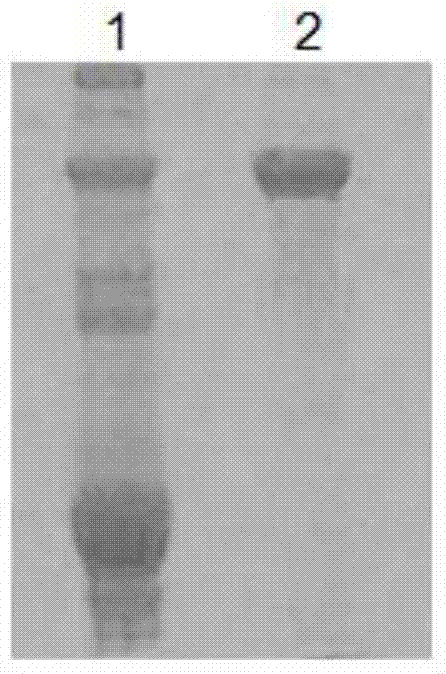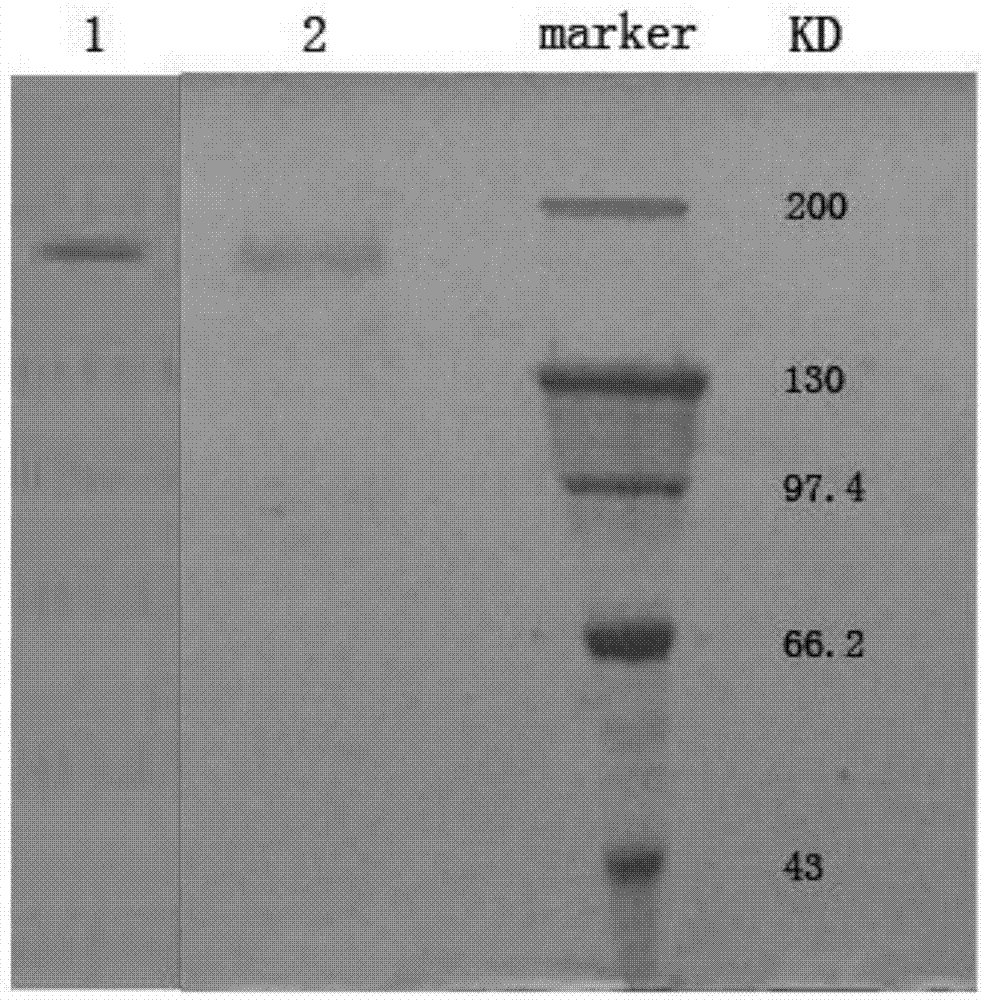Recombinant escherichia coli strain for producing beta-alanine as well as construction method and application thereof
A technology for recombining Escherichia coli and Escherichia coli, which is applied in the biological field, can solve the problems of low production of β-alanine and difficulty in meeting the requirements of industrial production, and achieve the effect of increasing production rate
- Summary
- Abstract
- Description
- Claims
- Application Information
AI Technical Summary
Problems solved by technology
Method used
Image
Examples
Embodiment 1
[0022] Construction and identification of Escherichia coli strains lacking aspartate amino-lyase gene:
[0023] 1) Amplification of the Apr gene: the DNA of the pIJ773 plasmid was used as a PCR amplification template to amplify the Apr gene (the pIJ773 plasmid was purchased from Hefei Baimai Biotechnology Co., Ltd.). The nucleotide sequences of primers aspA-KO-U and aspA-KO-D used to increase the Apr gene are shown in SEQ ID NO.2 and SEQ ID NO.3. The PCR amplification system is: DNA template 20ng, primer (10uM) 1ul, distilled water 40ul; PCR amplification conditions: 94°C pre-denaturation for 5min, 1 cycle; 94°C denaturation for 45s, 50°C annealing for 45s, 72°C extension for 90s, 10 cycles; 94°C denaturation for 45s, 55°C annealing for 45s, 72°C extension 90s, 15 cycles; 72°C extension for 10 min, 1 cycle.
[0024] 2) Obtain DNA fragments: Digest the PCR product obtained in step 1, that is, digest the Apr gene amplified from the DNA of the pIJ773 plasmid, thereby removing th...
Embodiment 2
[0028] Construction and identification of the recombinant Escherichia coli strain of the present invention:
[0029]1) Construction of recombinant E. coli strains:
[0030] The first step is to double digest the PanD gene of Corynebacterium glutamicum with NdeI and HindIII to obtain a DNA fragment of the PanD gene, which is the aspartic acid-1-decarboxylase gene of Corynebacterium glutamicum , with NdeI and HindIII double digestion plasmid pET24a (+) (Novagen company product), the size of the plasmid pET24a (+) is 5.31kb, which contains kanamycin resistance gene and lactose repressor lacI gene, the promoter is T7lac, and has multiple restriction endonuclease sites, the enzyme digestion system is: 43 μl of DNA, 5 μl of bufferR, 1 μl of HindIII, 1 μl of NdeI; the digestion conditions are: incubate at 37°C for 3 hours, as attached image 3 Shown is the agarose gel electrophoresis image of the digested product. The concentration of the agarose gel is 1.0%. Lanes 1 to 3 are DNA fr...
Embodiment 3
[0035] Fermentation and enzyme activity determination of the recombinant Enterobacter bacterial strain of the present invention:
[0036] 1) Fermentation of recombinant Enterobacter strains:
[0037] The first step is to prepare seed liquid and fermentation liquid. The composition of seed liquid medium is: peptone 1% ~ 1.5%, yeast extract 2% ~ 2.5%, glycerin 0.4% ~ 0.5%, potassium dihydrogen phosphate 0.2% ~ 0.3% , dipotassium hydrogen phosphate 1%~2%, kanamycin 50mg / L, the balance is pure water, adjust the pH to 7.0~7.2 with ammonia water; the composition of the fermentation medium is: peptone 1%~1.5%, yeast Extract 2% to 2.5%, glycerin 0.4% to 0.5%, potassium dihydrogen phosphate 0.2% to 0.3%, dipotassium hydrogen phosphate 1% to 2%, the rest is pure water, adjust the pH to 7.0 to 7.2 with ammonia water .
[0038] In the second step, put 500ml of seed liquid culture medium in a 2L Erlenmeyer flask, sterilize it at 121°C for 20 minutes, inoculate it on an LB plate after coo...
PUM
 Login to View More
Login to View More Abstract
Description
Claims
Application Information
 Login to View More
Login to View More - R&D
- Intellectual Property
- Life Sciences
- Materials
- Tech Scout
- Unparalleled Data Quality
- Higher Quality Content
- 60% Fewer Hallucinations
Browse by: Latest US Patents, China's latest patents, Technical Efficacy Thesaurus, Application Domain, Technology Topic, Popular Technical Reports.
© 2025 PatSnap. All rights reserved.Legal|Privacy policy|Modern Slavery Act Transparency Statement|Sitemap|About US| Contact US: help@patsnap.com



